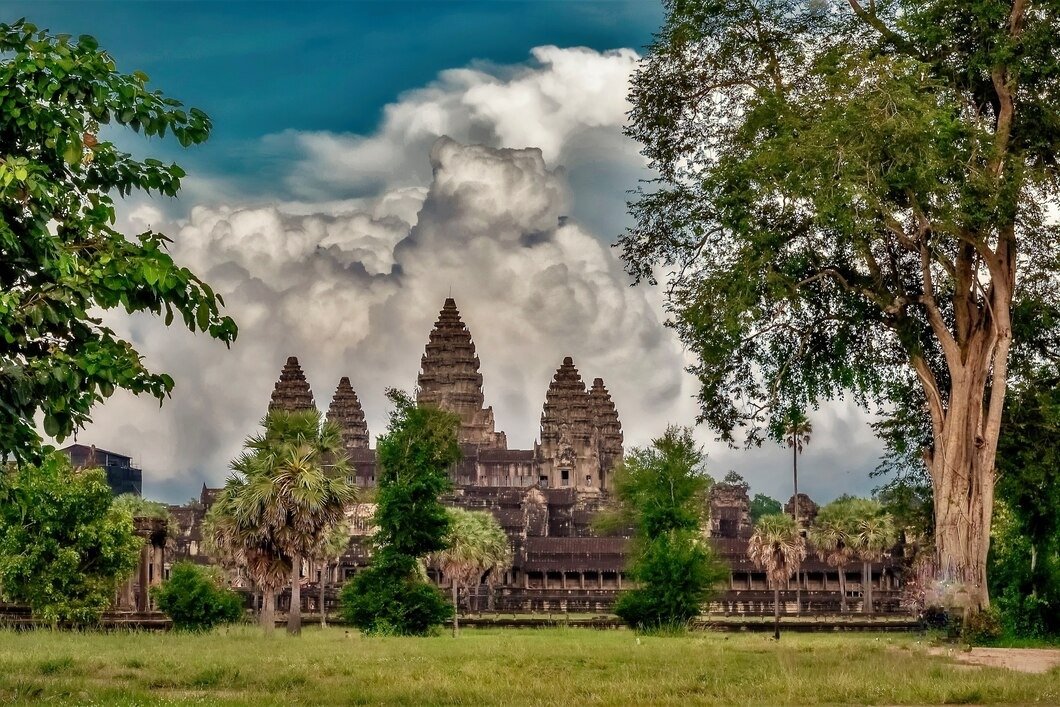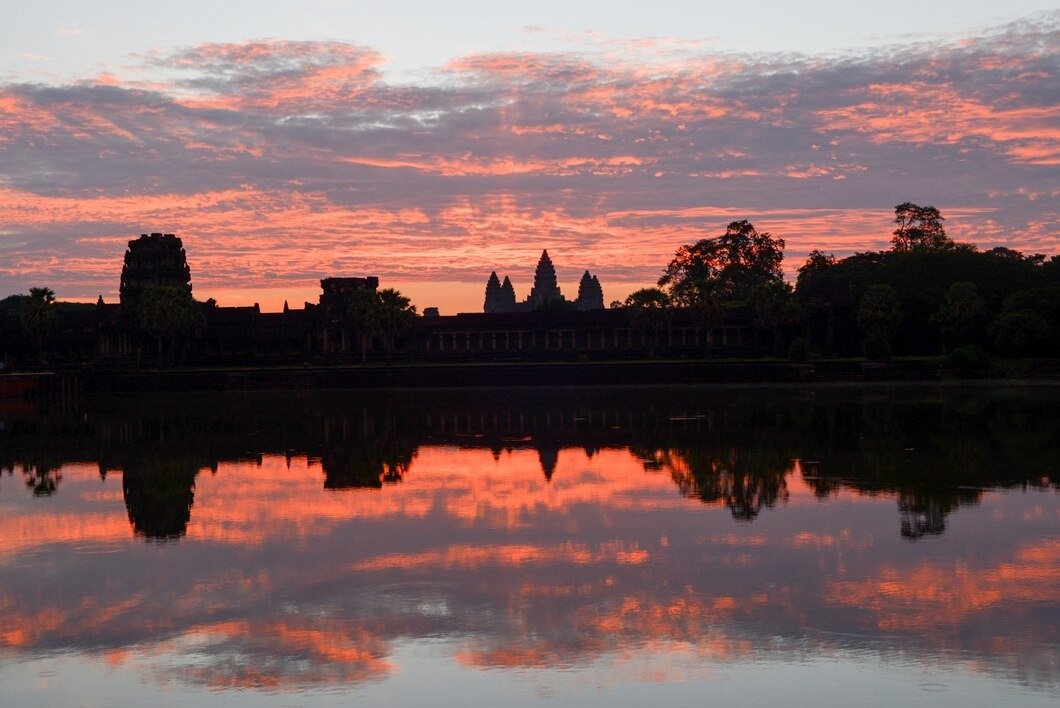A Bangkok to Angkor Wat tour is a once-in-a-lifetime journey that connects two of Southeast Asia’s most iconic destinations: Thailand’s bustling capital, Bangkok, and Cambodia’s ancient marvel, Angkor Wat. This trip is a perfect way to explore both Thailand and Cambodia, as you travel from one of the most vibrant cities in the world to one of the most historically significant temple complexes. In this ultimate guide, we’ll cover everything you need to know about embarking on a Bangkok to Angkor Wat tour, from transportation options to what to expect and tips for making your journey unforgettable.
Discover the best tours in Thailand at exclusive prices with thai adventure club
Why Take a Bangkok to Angkor Wat Tour?
A Bangkok to Angkor Wat tour offers an incredible opportunity to explore the cultural and historical treasures of two neighboring countries. While Bangkok is known for its modern vibrancy, impressive temples, and cultural diversity, Angkor Wat stands as the heart of Cambodia’s ancient Khmer Empire. Taking a guided tour from Bangkok allows you to experience both destinations seamlessly and efficiently.
For those interested in history, architecture, or photography, a tour from Bangkok to Angkor Wat is a dream come true. The Angkor Archaeological Park, home to Angkor Wat and several other temples, is a UNESCO World Heritage site and one of the largest religious monuments in the world. Exploring the ruins gives you a glimpse into Cambodia’s rich history, where you can admire the artistry of ancient Khmer architecture, intricate carvings, and breathtaking temples set amidst lush jungle.
Whether you’re seeking a cultural experience, an adventure, or simply an unforgettable journey, a Bangkok to Angkor Wat tour combines both the lively pulse of modern-day Bangkok and the historical grandeur of Angkor Wat, making it a must-do for anyone traveling to Southeast Asia.
Exploring Thailand hidden gems in 2024
Best Time to Visit Angkor Wat from Bangkok
Timing is everything when planning your Bangkok to Angkor Wat tour. The best time to visit Angkor Wat and the surrounding temples is during the dry season, from November to February, when the weather is cooler and more comfortable for sightseeing. During this time, you’ll avoid the scorching heat and heavy rains of the wet season (May to October), which can make exploring the temples difficult and less enjoyable.
If you prefer fewer crowds, visiting Angkor Wat during the shoulder months of March or early April can provide a more peaceful experience. However, be mindful that temperatures can start to rise as you get closer to the summer months. If you’re willing to brave the crowds, visiting during the peak season gives you the chance to experience Angkor Wat in its full glory with clearer skies and pleasant weather.
Planning your Bangkok to Angkor Wat tour around these seasons will help you make the most of your time exploring the temples and other attractions in the area.
How to Travel from Bangkok to Angkor Wat: Transportation Options
Traveling from Bangkok to Angkor Wat involves crossing the border into Cambodia, and there are several transportation options available depending on your preferences, budget, and time constraints.
- By Air (Fastest Option)
Flying from Bangkok to Siem Reap, the nearest city to Angkor Wat, is the fastest and most convenient option for those who have limited time. The flight takes about 1 hour and 15 minutes. Several airlines offer direct flights between Suvarnabhumi Airport in Bangkok and Siem Reap International Airport, with regular departures throughout the day. Once you arrive in Siem Reap, it’s just a short drive to the Angkor Archaeological Park. - By Bus (Budget Option)
For those on a budget, taking a bus from Bangkok to Siem Reap is an affordable and popular choice. The journey takes approximately 6 to 8 hours, depending on traffic and border crossing times. Several bus companies operate routes between Bangkok and Siem Reap, with most departures from Mo Chit Bus Terminal in Bangkok. While this option is slower than flying, it offers a scenic view of the countryside and an opportunity to experience local culture along the way. - By Private Car or Taxi (Comfortable Option)
If you prefer a more comfortable and direct experience, you can opt for a private car or taxi. The journey takes about 5 to 6 hours, depending on traffic and border delays. This option is ideal for those who want a more personalized experience and the convenience of door-to-door service. Many tour companies offer private transfers as part of their Bangkok to Angkor Wat tour packages, making this an excellent choice for those who prefer a hassle-free experience. - By Train (Scenic Option)
Though not the most common way to travel to Angkor Wat, taking a train from Bangkok to Poipet (the border town) is an option for those who enjoy a more leisurely, scenic ride. From Poipet, you can take a taxi or a shuttle to Siem Reap. This method is slower and requires multiple transfers, but it offers a unique way to experience the region’s landscapes.
Regardless of your chosen transportation, a Bangkok to Angkor Wat tour will typically include transport options that best suit the tour group’s preferences, with most tours providing a combination of flights, buses, or private vehicles for maximum comfort and convenience.

Must-See Temples at Angkor Wat: A Guided Tour of the Ancient Complex
The best tours in Bangkok to Angkor Wat typically include a guided tour of the Angkor Archaeological Park, which encompasses not just the world-famous Angkor Wat but also other stunning temples like Bayon Temple, Ta Prohm, and Angkor Thom. Each temple offers a unique insight into the grandeur of the Khmer Empire and the artistic achievements of ancient Cambodia.
- Angkor Wat: The most famous temple in the complex, Angkor Wat, is an architectural masterpiece that reflects the grandeur of the Khmer Empire. The temple is dedicated to the Hindu god Vishnu and later transformed into a Buddhist temple. With its massive scale, intricate carvings, and reflective pools, Angkor Wat is an awe-inspiring sight, especially during sunrise and sunset.
- Bayon Temple: Located at the heart of Angkor Thom, Bayon is known for its many smiling faces carved into the stone towers. The temple is a fascinating example of Khmer architecture and represents the shift from Hinduism to Buddhism. A guided tour of this temple provides insights into its symbolic meanings and architectural brilliance.
- Ta Prohm: This temple, famously featured in the movie Tomb Raider, is known for its overgrown trees and roots that intertwine with the stone structures. It offers a mystical and unique atmosphere, showcasing nature’s power reclaiming the once-great temple. It’s one of the most photographed sites in the complex.
A Bangkok to Angkor Wat tour will ensure that you see these remarkable temples and more, with expert guides sharing their knowledge of the history, art, and culture behind each structure.
The Rich History and Cultural Significance of Angkor Wat
Angkor Wat isn’t just a remarkable feat of engineering—it’s also a symbol of Cambodia’s rich history and cultural heritage. Originally built in the early 12th century as a Hindu temple dedicated to the god Vishnu, Angkor Wat eventually transitioned into a Buddhist temple. Its stunning architectural design reflects the religious and political grandeur of the Khmer Empire, which ruled much of Southeast Asia during the period.
The best tours in Bangkok to Angkor Wat often include detailed historical and cultural commentary, helping visitors understand the significance of the temple and its transformation over the centuries. From the temple’s alignment with the stars to its intricate bas-reliefs depicting Hindu mythology, every aspect of Angkor Wat tells a story of Cambodia’s past.
In addition to Angkor Wat, the temples of Angkor Archaeological Park are a testament to the Khmer Empire’s engineering, art, and culture. Many temples, such as Ta Prohm and Bayon, are adorned with bas-reliefs that depict scenes of daily life, battles, and religious practices, offering visitors a window into the empire’s way of life.
What to Expect on a Bangkok to Angkor Wat Tour: Itinerary Highlights
A typical Bangkok to Angkor Wat tour includes visits to the major temples of Angkor Wat and Angkor Thom, but there’s also a range of other activities to enhance the experience. You’ll usually start with an early morning departure from Bangkok, arriving in Siem Reap in time to begin exploring the temples.
Day 1 typically includes a visit to Angkor Wat, where you can enjoy the temple’s grandeur and historical significance, followed by a visit to Bayon Temple in Angkor Thom. Afterward, you’ll visit Ta Prohm, where you can walk through the ruins of this jungle-clad temple. Many tours also include a visit to Banteay Srei, a smaller temple known for its exquisite carvings.
On Day 2, you might explore other temples in the area, including Preah Khan and Neak Pean, before heading back to Siem Reap to visit the Tonle Sap Lake or the local market for souvenirs. The Bangkok to Angkor Wat tour usually includes guided transportation and all necessary entry fees, making it a convenient way to explore Cambodia’s cultural gems without worrying about logistics.
Essential Tips for a Seamless Bangkok to Angkor Wat Tour Experience
To ensure that your Bangkok to Angkor Wat tour goes smoothly, consider the following tips:
- Book in Advance: Due to the popularity of these tours, it’s essential to book your tour in advance to secure your spot and avoid disappointment.
- Wear Comfortable Clothing: The temples can be quite large, and you’ll be walking a lot. Wear comfortable shoes and light clothing that covers your shoulders and knees (a dress code is required when visiting temples).
- Bring Water and Snacks: The weather in Cambodia can be hot and humid, so stay hydrated and bring snacks to keep your energy up.
- Respect Local Customs: When visiting temples, be mindful of local customs. Keep your voice low, remove your shoes, and avoid touching sacred objects or statues.
A Bangkok to Angkor Wat tour can be the highlight of your Southeast Asia trip, offering a unique opportunity to experience the beauty and history of both Thailand and Cambodia. With careful planning, you’ll be able to appreciate the magnificence of Angkor Wat and other temples while learning about the incredible culture that shaped this remarkable region.
Follow us on:
- Facebook: Thai Adventure Club
- Instagram: thaiadventureclub


Comment (0)